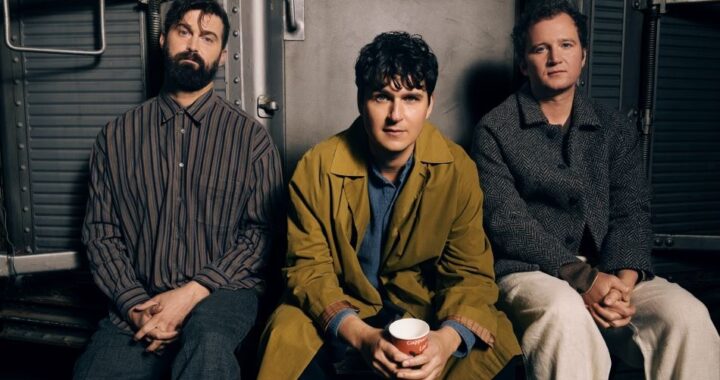Album Review: PJ Harvey – The Hope Six Demolition Project
4 min read
If Let England Shake was PJ Harvey’s way of showing how the society we live in has retained the same murkiness as 100 years ago, then The Hope Six Demolition Project is her submerging herself in it. Over the album’s 11 tracks, she chronicles her discontent with the world, rendered as timeless rock songs. Whilst many artists would try to offer a semblance of hope in their works, The Hope Six Demolition Project has none. The title may refer to an actual event in Washington DC, but it works too as a summary for the album; it’s about PJ Harvey gradually losing her hope in the face of the world, and the result is one of the darkest and most challenging albums in recent memory.
 Opening with The Community of Hope, Harvey tells her perspective on the suburb referred to in the album title. Over a raucous groove of drums, guitars, and blaring saxophone, Harvey recounts her experience on a walking tour of Ward 7, one of the “toughest” suburbs in Washington DC. The various landmarks are described to her – “and here’s the one sit-down restaurant” – before she ends the song on a repeated chant of “they’re gonna put a Walmart here”. Her perspective is distant and disenchanted, and the song sets the stage for the rest of the album.
Opening with The Community of Hope, Harvey tells her perspective on the suburb referred to in the album title. Over a raucous groove of drums, guitars, and blaring saxophone, Harvey recounts her experience on a walking tour of Ward 7, one of the “toughest” suburbs in Washington DC. The various landmarks are described to her – “and here’s the one sit-down restaurant” – before she ends the song on a repeated chant of “they’re gonna put a Walmart here”. Her perspective is distant and disenchanted, and the song sets the stage for the rest of the album.
Sonically, the albums takes the basic template of Let England Shake, and infuses it with more muscularity. Guitars take the place of autoharp, and Rid Of Me-era, crunchy chords even make an appearance on The Ministry of Defence. The swampy blues of Chain of Keys is gothic and menacing, whilst the backing vocals of Near the Memorials to Vietnam and Lincoln resemble that of an old campfire song. It’s not as much of a dramatic shift as Let England Shake was from White Chalk, but it’s Harvey’s most rock-influenced album in a decade, and it suits the immediacy of her new subject matter.
Whilst the album sounds great, the instruments really only exist in service of Harvey’s powerful lyrics. Harvey has shied away from writing autobiographically since the earliest parts of her career, but The Hope Six Demolition Project sees her doing just that, albeit in a unique way. She sings almost exclusively about situations she’s observed whilst touring, from a child tormenting starlings on Near the Memorials to Vietnam and Lincoln, to watching the homeless gather around The Ministry for Social Affairs. However, whilst the subject matter is always external, the perspective and voice is distinctly Harvey’s. Her tone alternates between horror – “the circle is broken, she’s dead” – ponderousness – “thinking about medicinals, how they used to grow there” – and hopelessness – “a key so simple and small / how can it mean no chance at all?”.
What makes The Hope Six Demolition Project different from other “state of the world” protest albums is the relative lack of protest. Harvey has no righteous fury, no cross to bear. Over the course of the album, the world robs her of her passion, and she becomes one of the desensitised masses she chastises on The Wheel – “hey little children don’t disappear / I heard it was 28000”. The only track on which she allows herself to fully conceive the gravity of her concerns is on the crushing closing track, Dollar, Dollar. It tells the brief story of Harvey seeing a starving boy begging for money in the street – “he’s saying dollar dollar” but her car pulls away too fast for her to be able to help. It highlights the class differences (it’s telling that Harvey’s car is being driven by someone else), and the sense of powerlessness one can feel in the face of overwhelming suffering, but above all, the song hones in on the humanity of the boy at its centre. Harvey repeats that his face is “pock marked and hollow”, but by the time she’s asked if there’s anything she can do to help, he’s already “in the rear view glass”.
The Hope Six Demolition Project is not an easy album to sit through. It pulls no punches, and Harvey seems to bear just as much ill will for herself as she does for the world around her. The first 9 tracks are a gradually tightening string of tension, with only the groove of The Wheel and the sadness of Dollar, Dollar as respite. However, the tension and numbness of those tracks in necessary for the record to be as powerful as it is. As she did with Let England Shake, Harvey has made an album that is both grand, and profoundly personal. It’s a record only she could have created, and it sets a new, high bar for her future career.



